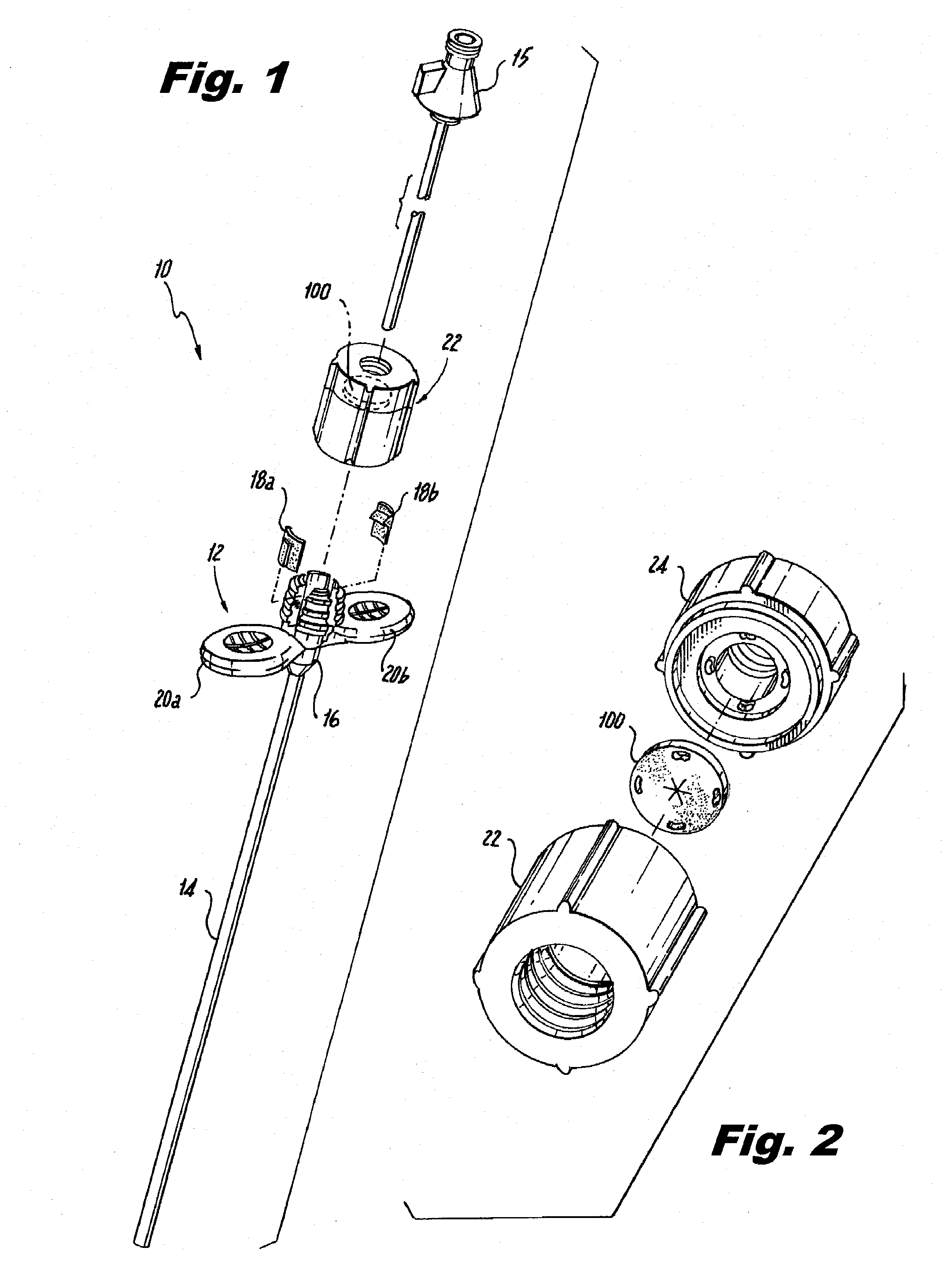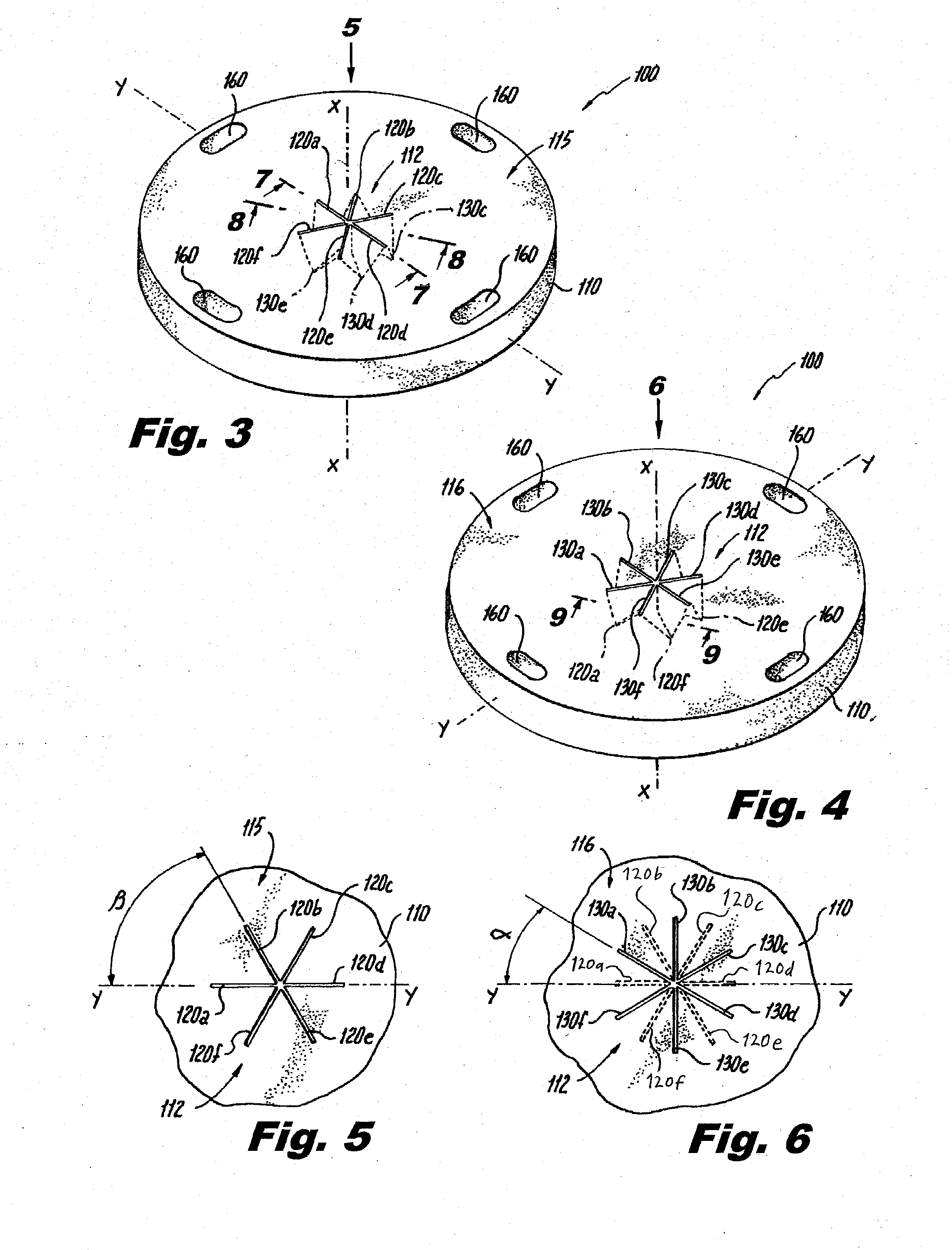Low insertion force hemostasis valve for vascular introducer
a technology of vascular introducer and low insertion force, which is applied in the field of vascular introducer, can solve the problems of difficult introduction of lead, significant blood loss of patients, and embolism in the vascular system of patients
- Summary
- Abstract
- Description
- Claims
- Application Information
AI Technical Summary
Benefits of technology
Problems solved by technology
Method used
Image
Examples
Embodiment Construction
[0037]Referring now to the drawings wherein like reference numerals identify similar structural features or aspects of the surgical devices disclosed herein, there is illustrated in FIG. 1 an exemplary embodiment of a splittable or peel-away vascular introducer designated generally by reference numeral 10, which includes the novel hemostasis valve of the subject invention.
[0038]Vascular introducer 10 is disclosed in U.S. Patent Application Publication 2008 / 0097386, which is incorporated herein by reference in its entirety for purposes of enablement and illustration. Those skilled in the art should readily appreciate that the disclosure of vascular introducer 10 should not be construed as limiting the scope of the subject invention in any way. In other words, while the hemostasis valve of the subject invention can certainly be employed with the exemplary vascular introducer 10, it can also be employed with other types of vascular introducers, including those which are not designed to...
PUM
 Login to View More
Login to View More Abstract
Description
Claims
Application Information
 Login to View More
Login to View More - R&D
- Intellectual Property
- Life Sciences
- Materials
- Tech Scout
- Unparalleled Data Quality
- Higher Quality Content
- 60% Fewer Hallucinations
Browse by: Latest US Patents, China's latest patents, Technical Efficacy Thesaurus, Application Domain, Technology Topic, Popular Technical Reports.
© 2025 PatSnap. All rights reserved.Legal|Privacy policy|Modern Slavery Act Transparency Statement|Sitemap|About US| Contact US: help@patsnap.com



